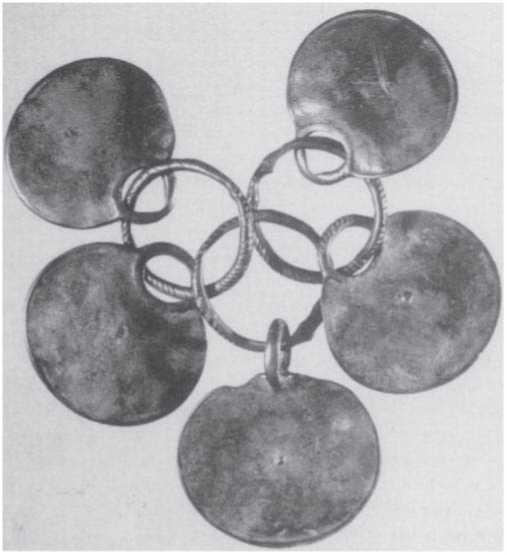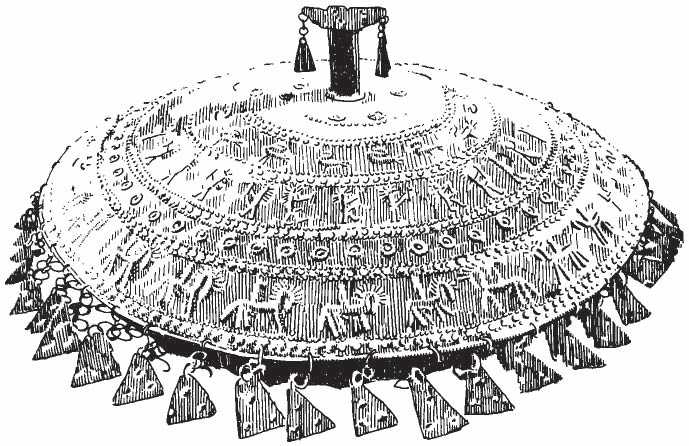A crucial role in Celtic warfare was played by animals. Horses were employed in cavalry and in chariot-units, and lesser equines - mules, ponies and donkeys - were used as draught - and baggage-animals. Dogs may also, on occasions, have been used as fighting animals. Horses and dogs fought together in the war between Ulster and Connacht, as chronicled in the 'Tain Bo Cuailnge',1 and Pliny alludes to the custom of crossing dogs with wolves to produce a fearsome battle-animal.2 Certain beasts were regarded as symbols of ferocity, aggression and battle, because of the valour or bellicosity of their dispositions. But this chapter is necessarily first and foremost concerned with horses. Celtic warriors were renowned for their skill as cavalry and chariot-fighters and it was, at least partly, because of this that horses enjoyed such a prominent position as status symbols and objects of veneration in the Celtic world. 'Horseback produced history's first revolution in land transport.'3
The use of horses for riding, which allowed warriors to cover ground very fast, transformed methods of warfare. Owning horses - then as now - involved a certain level of wealth, since feed and maintenance were relatively costly. This led to social divisions, between those who could afford to keep and ride horses and those who could not. This hierarchy of 'knights' and the rest is evident not only in the world of the Celts but also in the Near East much earlier, at around 2000 BC, and in recent American Indian societies after AD 1600. There can be no doubt that the introduction of horse-riding had an enormous impact on civilization.4
The three main uses of horse-riding in antiquity were for sport, hunting and warfare. The efficient control of a horse depends upon the use of a bit, which rests on the sensitive gum between the incisors and premolars, enabling the rider to apply pressure to the soft mouth of his mount. The oldest surviving bit dates to about 1500 BC, but a horse whose teeth bore the evidence of wear from a bit was buried in the Ukraine in about 4000 BC.5

Figure 4.1 'Jangle' from bronze horse-harness, the earliest piece of evidence for horse-harnessing in Wales, 850 BC, from the Parc-y-Meirch Hoard, Gwynedd. By courtesy of the National Museum of Wales.
Ann Hyland has recently published a fascinating study of the horse in the Roman world,6 but her observations are more wide-ranging and she makes a number of useful general points about horses and warfare which pertain to many ancient societies. She comments that war-horses do not need to be particularly fast, but they have to be compact and able to bear loads without undue stress. Short, stocky beasts with an adequate ride, speed and capacity for endurance would thus be especially suitable. Ponies are not good in battle: they are unstable and uncomfortable to ride, but we know that certain Celtic tribes did use ponies, sometimes even riding without saddles. Horses are not naturally aggressive creatures, but they can become so in a war situation, particularly stallions, who can be trained to use both feet and teeth against an opponent. They are intelligent, with some ability to reason and to learn. They can forage on the march and they are brave.7
Horses were being used for transport in Mediterranean Europe by at least the mid-second millennium BC. From the eighth century BC in much of northern Europe, including Hungary, Switzerland, south Germany,
Belgium and Britain, there is archaeological evidence of a new and very distinctive group of metal types associated with bridle-bits and bones of horses. This is the first indication of the tradition of riding in temperate Europe. The cemetery of Court Saint Etienne in Belgium, and the deposits at Llyn Fawr (Mid Glam.) and Heathery Burn (Dur.) in Britain are examples of the sporadic nature of the distribution outside the main central European cluster of evidence for horse-riding, and these discoveries represent not large-scale migration but rather local contact and the activities of raiding parties from Middle Europe. So we can say that by the eighth century BC warriors were fighting on horseback in much of the Celtic world.8
During the Hallstatt period of the earliest Celtic Iron Age, from around 750-700 BC, there is evidence of aristocratic horsemen wielding long iron swords. Some of these martial princes were buried in rich graves on wagons pulled to the tomb by horses. One such was the chief interred with great ceremony at Hochdorf in Germany in the sixth century BC: he had been covered in sheet-gold; even his shoes were of gold; and he wore a neckring decorated with rows of tiny horsemen, similar to the belt worn by another sixth-century warrior at Kaltbrunn,9 which was ornamented with horse motifs. Certainly Hallstatt iconography reflects the concerns of an aristocratic, horse-riding society who habitually fought on horseback. A grave at Hallstatt itself contained a sword-scabbard (figure 4.2) decorated with images of foot-soldiers and horsemen with spears, wearing trousers or breeches, short tunics and helmets; one of them is depicted spearing an enemy who lies by his horse's front hooves.10 Many objects belonging to the Hallstatt tradition display iconography associated with horsemanship. A pot from a barrow at Sopron-Varhely, probably belonging to the late seventh century BC, bears an incised figure of a horseman.11 A sheet-bronze lid from a bucket or situla at Kleinklein in Austria (figure 4.3) is decorated in repousse with horsemen riding ithyphallic horses with radiate manes.12

Figure 4.2 Detail of engraving on a bronze and iron scabbard, showing warriors on horseback, 400-350 BC, Hallstatt cemetery, Hallstatt, Austria. Length of scabbard: 68cm. Paul Jenkins.

Figure 4.3 Sheet-bronze bucket-cover decorated with horsemen and infantrymen, Hallstatt Iron Age, Kleinklein, Austria. Diameter: 35.7cm.
Paul Jenkins.
Mounted warriors are present on the bronze cult-wagon at Strettweg: here the horsemen are naked, with oval shields, spears and pointed helmets; and they ride slender, graceful beasts (frontispiece).13 Situlae may depict horses and horsemen: the vessel at Vace in Yugoslavia shows war-horses being led by their masters.14 A clay figure of a horseman comes from Speikern in Germany (figure 3.9)15 and, at Hallstatt, a bronze axe dating to about 600 BC bears the figure of a horse and rider, probably a warrior, on the top of the blade.16




 World History
World History









